 Caroline Gladstone
Caroline Gladstone
For full functionality of this site it is necessary to enable JavaScript. Here are the instructions how to enable JavaScript in your web browser.
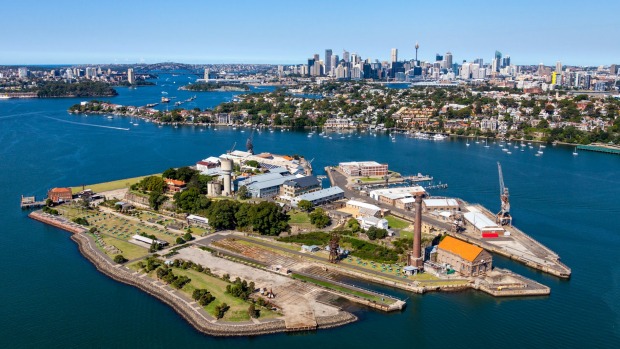
A hunk of sandstone and concrete adrift in Sydney Harbour, almost at the junction of the Parramatta and Lane Cove rivers, Cockatoo Island is 10 kilometres west of Circular Quay and a 25-minute ferry ride away. Although it's the largest of the harbour's 30 islands, its area is a mere 18 hectares. It's small enough to easily navigate via the many paths and steps that skirt its misshapen four sides, and which lead to the summit – a rocky knoll standing a dizzy 18 metres or so above sea level.
This accessibility affords plenty of sweeping vistas of the harbour, from many varied angles. To the island's north lie the Hunter's Hill and Woolwich shorelines, to the south there's Balmain, off to the east is the tip of Birchgrove peninsula, while just to the west is tiny Spectacle Island, which I have to admit I'd never heard of before this outing.
Under the guardianship of the Sydney Harbour Federation Trust since 2001, the island was first opened to the public 10 years ago as a festival site, and in 2010 earned a UNESCO World Heritage listing for its collection of early convict buildings.
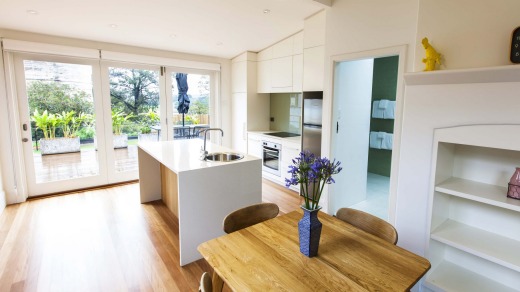
Cockatoo Island is nirvana for lovers of industrial spaces and early penal architecture. I'm so taken by the place, photographing every girder, rusting iron pulley and refurbished old shed, I feel that I must have been a Rosie the Riveter in an earlier life. I love the palpable feeling of industry and an "honest day's work" I feel as I walk among the old discarded machinery. Every time I round a corner in this blue-collar domain, I spy another artistic-looking crane, standing noble against a backdrop of iridescent blue harbour and multimillion-dollar Sydney real estate.
Most Sydneysiders know Cockatoo Island as a former shipyard and naval dry dock, but some may not be aware of its convict history, where for 30 years (from 1839) 'secondary offenders' or those who re-offended once ensconced in Port Jackson, were incarcerated.
A stint as a reformatory for girls and industrial school for wayward boys followed before shipbuilding became the dominate industry for almost a century. The shipyard closed in 1992, and the island lay idle for a decade.
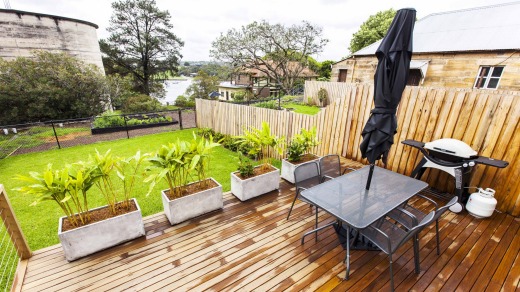
In 2008 the island welcomed its first overnight guests who bedded down in khaki canvas tents, the most luxurious of which brought the concept of 'glamping' (glamour camping) to the harbour. Since then the Trust has renovated several early 20th century administrative buildings and offered them for short-term rental. They include two four-bedroom houses, three apartments with glorious harbour views down to the Bridge and the old fire station, now a one-bedroom studio.
The heritage Garden Apartment is the latest self-contained accommodation to go into the rental pool.
Formerly the residence of the island's police officer and assistant medical officer, the two-bedroom semi (there is a permanent island staffer housed on the other side of the dividing wall), opened in October 2014.
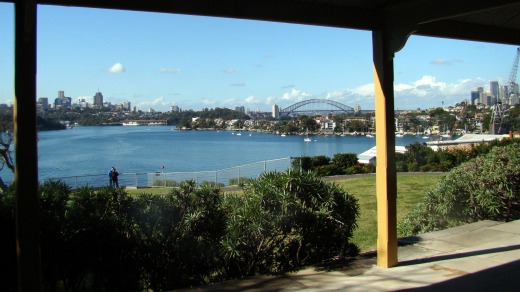
The view from the back terrace extends across the Lane Cove River to Woolwich and is slightly obscured by a big water tank and a few trees. In real estate parlance it's a biggish water glimpse.
The two-bedroom apartment is housed in a Federation building, with exterior paintwork in the classic tones of maroon and mustard. Entrance is down a side path and once I open the original timber door inlaid with stained glass, I'm impressed. There are just enough touches of the original design, complemented by art deco reproduction light fittings, to make it interesting to a history lover. While the interior has been given a funky facelift with modern kitchen and dazzling new floorboards, the old architraves, picture rails, skirting boards and casement windows give the place a real charm.
The layout reminds me of the many semis I've seen in the more suburban corners of Bondi Beach: entrance down a side alley, two bedrooms off the entrance, a small narrow hallway leading to a lounge room and on to the kitchen. However, I assume a wall has been knocked out here and there to give the living areas a more open feel. The lounge room and one of the bedrooms has a fireplace, while both bedrooms open onto a small porch at the front of the apartment. I'm not sure how often you'd use it (unless taking your cup of tea there in the morning), as the deck at the rear of the apartment, just outside the kitchen via sliding doors, is really the place to be and to barbecue.
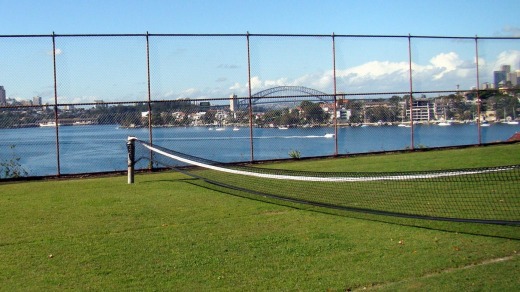
Off the all-white kitchen is an equally slick bathroom-laundry combo. There's a bath set against a wall of fantastic metallic tiles at one end and a washer/dryer at the other, while the toiletries from the Appelles range add a touch of luxury.
The lounge is cosy with sofas and a chaise lounge in autumnal tones, a few lamps and a futuristic looking low-rise TV cabinet containing all the entertainment musts – flat screen TV, DVD and CD players and an iPod docking station.
As all accommodation is self-catering guests are welcome to bring their own food and drinks, including alcohol, as long as the latter is consumed in their digs. Breakfast and dinner BBQ packs can be ordered. The breakfast pack ($30) consists of bacon, eggs, sausages and bread rolls, while there is a simple pack of muesli and bread/jam available for $15 for two. For dinner we opted for BBQ pack 2, which contains six chicken souvlaki sticks, salads, dips and pitta bread. There is also a steak and snags dinner pack (also $45) and a vegetarian option of patties and salad ($35).
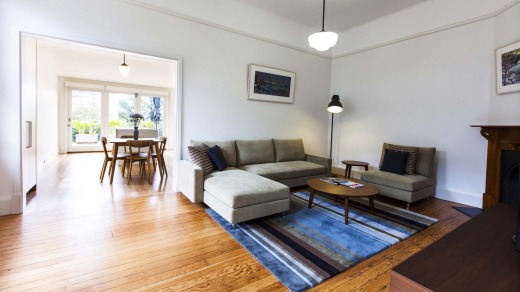
The island has three dining venues, mostly geared to the day-time diner. Societe Overboard cafe (at Parramatta Wharf) serves burgers, wraps, sandwiches and cakes, along with coffees and beer and wine and is open from 8.30am to 4pm on weekends (5pm on Saturday) and from 9.30 to 4pm on weekdays. The Marine Centre at Camber Wharf (the boat marina) has two small eateries open at the weekend from 10am to 5pm. Airstream offers gourmet pies, wraps and melts along with alcohol, while the Captain Sausage serves a variety of German hotdogs. Island Bar, which is open most of the year (except during winter), has varied opening times depending on the day; Friday and Saturday nights are open until 9pm, while on Thursdays it's 7.30pm. The lunch and dinner offerings are pizza, salad and sandwiches; cocktails and beer and wine are also available.
Cockatoo Island is a Disneyland for grown-ups; there are a more than a dozen places of interest along with plenty of picnic spots with terrific views. You can do your own guided tour with an audio commentary headset ($5 from the visitor's centre) visiting sites including convict and army barracks, old silos carved into the rock face, docks, slipways and tunnels, or take a group guided tour. The Biloela gallery in the former Superintendent's cottage on the island's summit has a semi-permanent exhibition called Shipyard Stories. There are kayaks to hire, a tennis court to book, public barbecue facilities and keen folks can volunteer to help with the ongoing restoration work.
Both the Parramatta River Cat and the Balmain/Woolwich ferries call at the island several times throughout the day.
A couple of nights on the island is the perfect mixture of an island and city stay – you can see the "big smoke" but you're happily away from all the fuss and bother. The historical displays and old structures are impressive and the accommodation stylish and comfortable. There's nothing like waking up in such a unique spot, checking out the view and then setting off to explore it all.
Cockatoo Island Garden Apartment.
$370 a night (Monday to Thursday); a one-bedroom option (not using the second bedroom) is $280 a night. (Week nights only).
$470 a night (Friday to Sunday: two night minimum stay).
Phone: (02) 8969 2111, see cockatooisland.gov.au.
Highlight: Being immersed in history.
Lowlight: The Garden Apartment is the same price as the Harbour View Apartments but minus the stunning view.
No TripAdvisor ratings as yet (not for this new apartment).